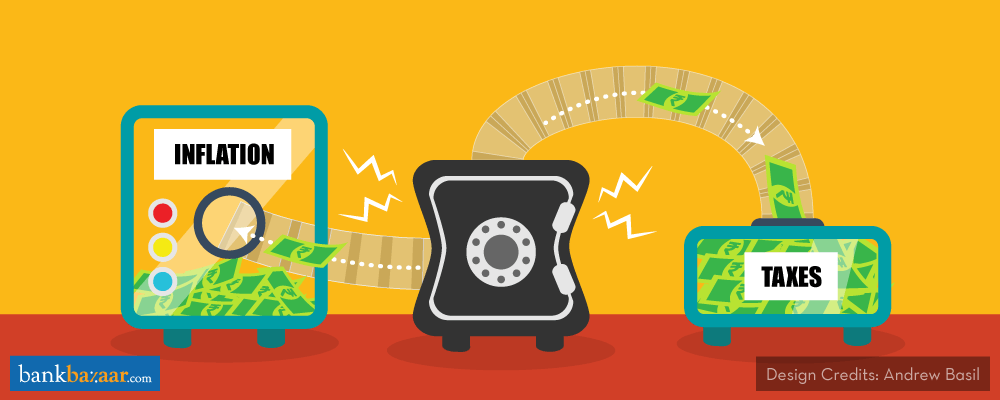
With liquidity increasing in the banking ecosystem after the demonetisation drive, interest rates are falling and are expected to reduce further. This means that while banks are earning less from lending, they’re also forced to reduce interest payments on deposits in order to reduce their costs.
Fixed Deposits are among the most preferred investment options among investors who prefer safety and assured returns. With interest rates slashed, deposits are now earning less. So where does the intrepid investor move his money, in order to earn higher returns than bank deposits?
Interest rates have an inverse relationship with bond prices. When interest rates are falling, bond prices start going up. Debt funds, liquid funds, bonds and corporate deposits are some such options. Let’s take a look at some smart investment options in a low interest rate situation.
Mutual Fund Debt Investments
Debt Mutual Funds invest in fixed income securities such as central/state government bonds and securities, corporate non-convertible debentures of high credit rating, treasury bills, etc. These funds act like a cushion when interest rates are poised to fall. They typically fetch higher returns than the prevailing inflation rate and are a good option if you are looking for steady returns over a long tenure. This is a good time to stay invested in long-term debt funds.
Like any other Mutual Fund, an investor can opt for an open-ended debt fund by purchasing units at daily NAV. Investors can buy a debt fund either by visiting a Mutual Fund office, or online through brokerage houses and aggregators.
As per the CRISIL AMFI Debt Fund Performance Index for September 2016, this category of funds has been delivering annual returns of 9.73% in the preceding 12 months, 10.21% in the preceding three years, 9.26% in the preceding five, and 8.40% in the preceding ten years.
With debt funds, you also have tax benefits for long-term investments that Fixed Deposits can’t provide. The interest in a bank Fixed Deposit is taxable from the first rupee earned. If a debt Mutual Fund remains invested for three years, the capital gains from it qualify for long-term capital gain and enjoy indexation benefits. The tax rate for short-term capital gains is fixed as per the slab rate.
Additional Reading: Risks In Debt Mutual Funds
Liquid Funds
They are a class of debt Mutual Funds which invest in fixed income securities such as short-term treasury bills, term deposits, commercial papers, etc. for a short duration. The maturity of assets that liquid funds invest in is less than 91 days. There is no entry or exit load. The management fee or expense ratio is between 0.5 to 1%.
Investors can withdraw money at any given point of time and withdrawals get processed within 24 hours on a business day. In the last one year, the best liquid funds have returned 7.5 to 8%.
As per the CRISIL AMFI Liquid Fund Performance Index for December 2016, this category of funds has been providing annual returns of 7.61% for the preceding 12 months, 8.33% for the preceding three years, 8.67% for five, and 7.83% for ten years.
Company Fixed Deposits
Company Fixed Deposits refer to deposits placed by investors with companies at a fixed rate of interest. The interest rates are typically higher than bank FDs. However, there is a lock-in period associated with these funds. No tax is deducted at source if the interest income is within Rs. 5000 in a year. However, there is a risk of default on payment of interest and principal of the company as these Fixed Deposits are not secured against assets of the company.
Bonds
Returns on bonds are inversely proportional to interest rates. So, this is a good time to go with bonds. Investment can be made in both corporate or government bonds. The returns on corporate bonds are typically higher. In case of bonds, the borrower promises to pay the principal amount after a specified time and pays interest at an agreed rate of interest annually, semi-annually or quarterly, depending upon the terms and conditions attached.
Public Provident fund (PPF)
PPF is a long-term safe investment option which offers an interest rate of 8% currently. It has a long-term maturity period of 15 years, with the option to make a partial withdrawal after seven years. Your interest earnings from PPF are completely tax-free. The PPF is the best small savings scheme available on the basis of tax efficiency, long-term growth, and returns offered.
Additional Reading: PPF vs NSC: What’s Better?
Falling interest rates or not, the intrepid investor always finds ways to make the best of the prevailing economic conditions. So, if you’re looking at investments that help you earn higher returns than Fixed Deposits, give these above-mentioned ones a chance in 2017.